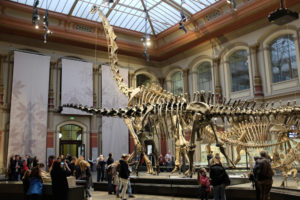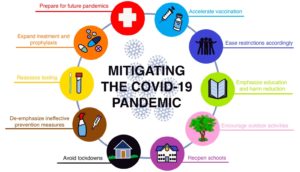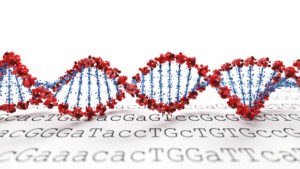
BMC Ecology and Evolution: Exceptionally simple, rapidly replaced teeth in sauropod dinosaurs demonstrate a novel evolutionary strategy for herbivory in Late Jurassic ecosystems

Sauropods, a group of long-necked plant-eating dinosaurs, were the largest animals to have ever walked the earth. In this study, Melstrom and colleagues demonstrate that sauropods evolved a unique feeding strategy that helped them dominate their environments for over 100 million years.
Dental complexity, a measure of the number of features on a 3D tooth surface, is closely linked to an animal’s diet. For example, meat-eaters typically have simple sharp teeth for ripping flesh, while plant-eaters have complex teeth with many cusps and ridges to grind down fibrous vegetation. Using computerised tomography (CT) and microCT scanning, Melstrom and colleagues analysed 3D models of Late Jurassic dinosaur teeth from around the globe. The group compared the dental complexity of carnivorous theropods, herbivorous ornithischians and herbivorous sauropods.
As expected, meat-eating theropods had simple sharp teeth while plant-eating ornithischians had more complex teeth. However, in stark contrast to herbivores living today, sauropods had mostly simple teeth. Furthermore, sauropods replaced their simple teeth faster than more complex teeth. Some sauropods like Apatosaurus and Diplodocus exhibited remarkably simple ‘peg-like’ teeth with incredibly fast replacement rates, which possibly allowed them to eat different foods from other sauropods like Brachiosaurus, which had more complex teeth. Given that simple teeth weigh less, reducing the skull’s weight, the simple teeth of sauropods could have reduced the strain on their long necks.
BMC Research Notes: The importance of adherence to international standards for depositing open data in public repositories

Open science practices, including the deposition of data in public repositories, bring significant benefits to individual researchers, research communities and society. Making data publicly available increases the transparency, reproducibility and speed of dissemination of research. Consequently, transformative open science policies are increasingly becoming standard worldwide. In this commentary, BMC Research Notes senior Editorial Board Member Diego Forero and colleagues discuss the value of data sharing in open repositories as well as the challenges and strategies for the success of open science. The commentary highlights that in times of COVID-19, adherence to international standards for depositing open data in public repositories is now more important than ever.
The BMC Series actively supports open science, explore our open data principles, policies and publishing options on our recently launched “Open Data at the BMC Series” website.
BMC Public Health: Revisiting COVID-19 policies: 10 evidence-based recommendations for where to go from here

As a result of open science initiatives, such as the European commission COVID-19 data portal, knowledge about COVID-19 has grown exponentially. With the successful development of multiple vaccines, Halperin and colleagues present a set of evidence-based policy suggestions to help reduce harm from COVID-19 and our response to it for when we move from the pandemic to the endemic phase.
BMC Infectious Diseases: Persistence of SARS-CoV-2 infection on personal protective equipment (PPE)

How long is the virus responsible for the current COVID-19 pandemic stable and infectious for on Personal Protective Equipment (PPE)? In this in vitro study, Córdoba-Lanús and colleagues evaluated SARS-CoV-2 stability and viability on PPE gowns and FFP2 (KN 95) face masks infected by the virus.
Genomic analyses by real-time polymerase chain reaction (RT-qPCR) revealed that SARS-CoV-2 genomic material remains on PPE for up to 30 days post contamination. In addition, via a cell-based assay using Vero-E6 host cells that measures the cytopathic effect of the virus, the researchers demonstrated that SARS-CoV-2 contaminated PPE materials remain infectious for up to 7 days. These findings could help improve PPE use and management to avoid SARS-CoV-2 infection from these items after the wearer has removed them, even after several days.
BMC Genomics: Transposable elements that have recently been mobile in the human genome

Transposable elements (TEs), also known as “jumping genes”, make up almost half of our genetic material. TEs are highly repetitive DNA sequences capable of mobilising themselves and increasing their copy number in the host genome. Historically, many scientists dismissed these TEs as useless “junk” DNA. However, these mobile elements are now known to have a multitude of biological functions. TEs can have neutral, beneficial, and harmful effects and contribute to human genetic variation and disease.
In this study, Talal bin Amin and colleagues develop a novel statistical approach to catalogue the recently mobile TE subfamilies (RMSs) that make humans different from each other – the types of TEs that drive human polymorphism, somatic variants and disease. Interestingly, the RMS catalogue is enriched for contributions to germline genetic disorders and somatic insertions in diverse cancers. These RMSs are primarily found within open chromatin regions associated with active DNA regulatory elements – therefore, the group speculates that they could be involved in regulating gene expression. Using CRISPR/Cas9 deletion, Talal bin Amin and colleagues show that an RMS-derived polymorphic TE insertion increased the expression of RPL17, a gene associated with lower survival in liver cancer. The RMSs and RMS-derived polymorphic TE insertions identified in this study are a valuable resource for human disease genetics and population history studies.
BMC Public Health: Exploring the benefits of participation in community-based running and walking events: a cross-sectional survey of parkrun participants

We all know the benefits of physical activity for our health and wellbeing, yet high levels of sedentary behaviour remains a global health crisis. Parkrun, a charity that organises free weekly 5km running/ walking events in the UK, helps fill the need identified by the World Health Organisation for physical activity opportunities that use public spaces and engage whole communities. However, inequality in parkrun participation persists, with those from socioeconomically deprived areas less likely to participate.
In this study, researchers investigated the perceived benefits from participation in parkrun by those living in the most socioeconomically deprived areas and doing the least physical activity. Quirk and colleagues sent out 2,318,135 surveys to parkrun participants in the UK and received 60,000 responses. Respondents reported improvements to fitness, happiness, physical and mental health since participating in parkrun. Interestingly, when compared to the entire sample, a greater proportion of previously inactive respondents from the most socioeconomically deprived areas reported these improvements.
This research demonstrates how community initiatives like parkrun can help engage people from diverse backgrounds in recreational physical activity. Furthermore, the study highlights a need to encourage better representation from groups who potentially benefit the most from being more active.
Comments